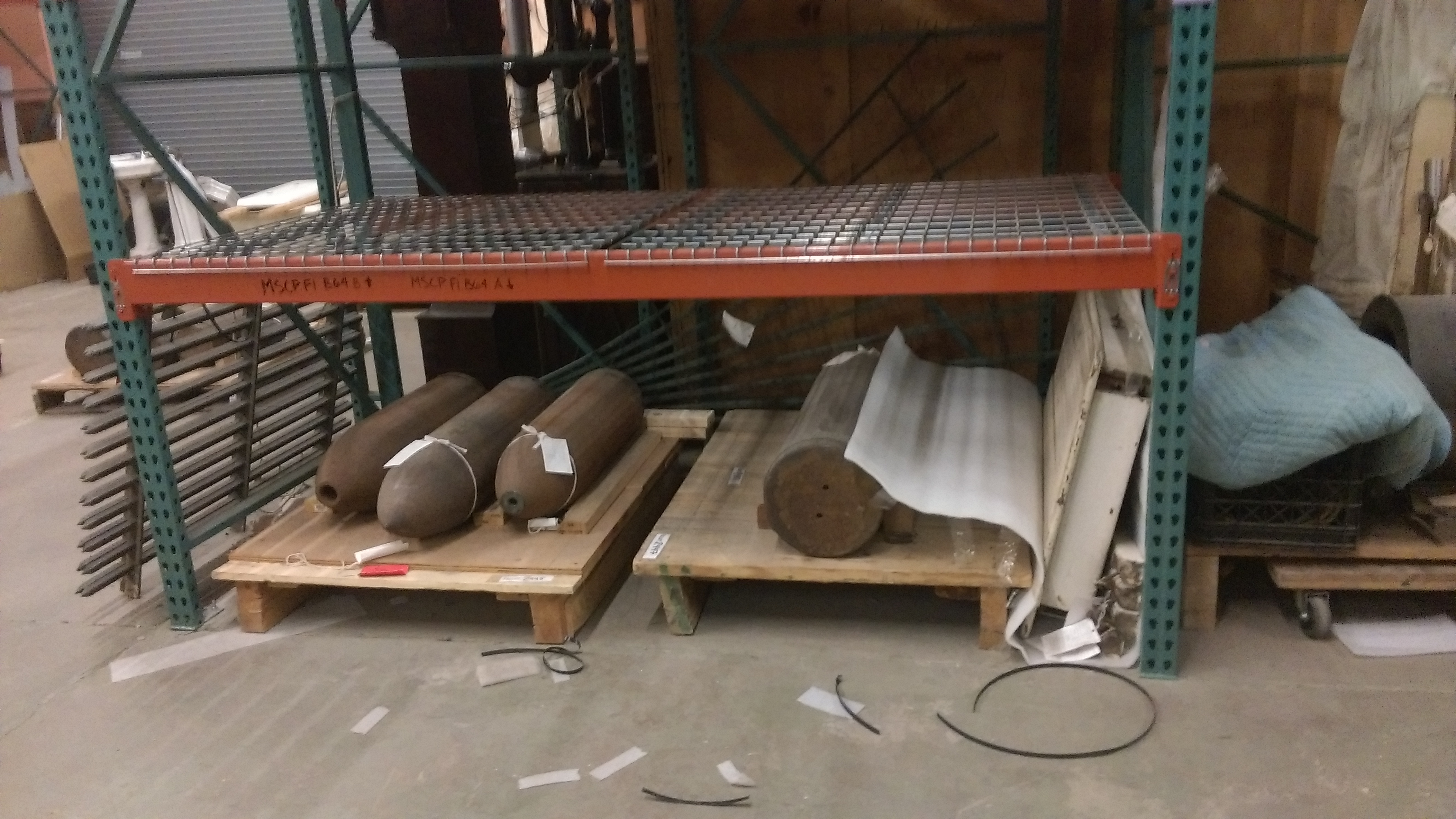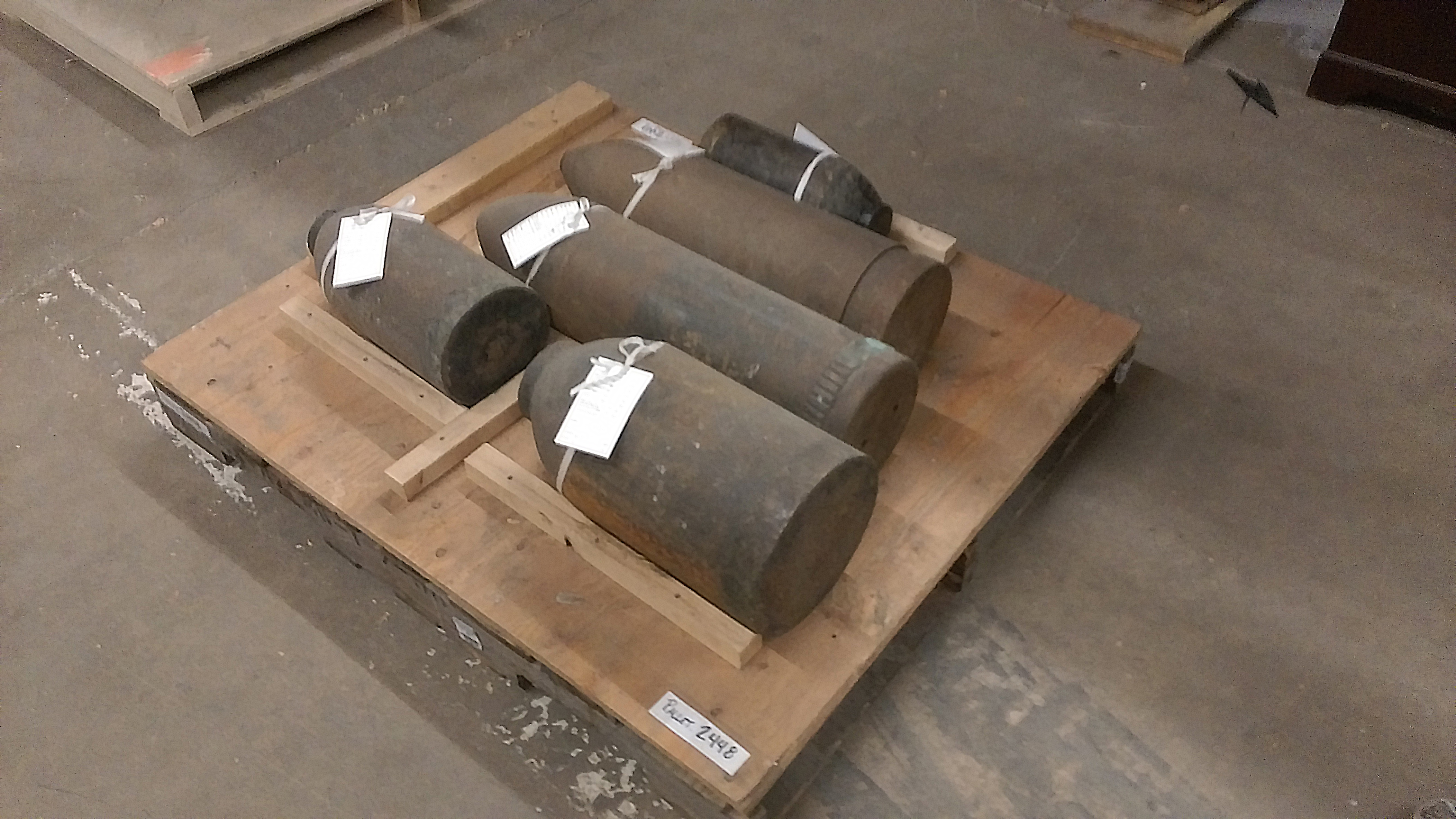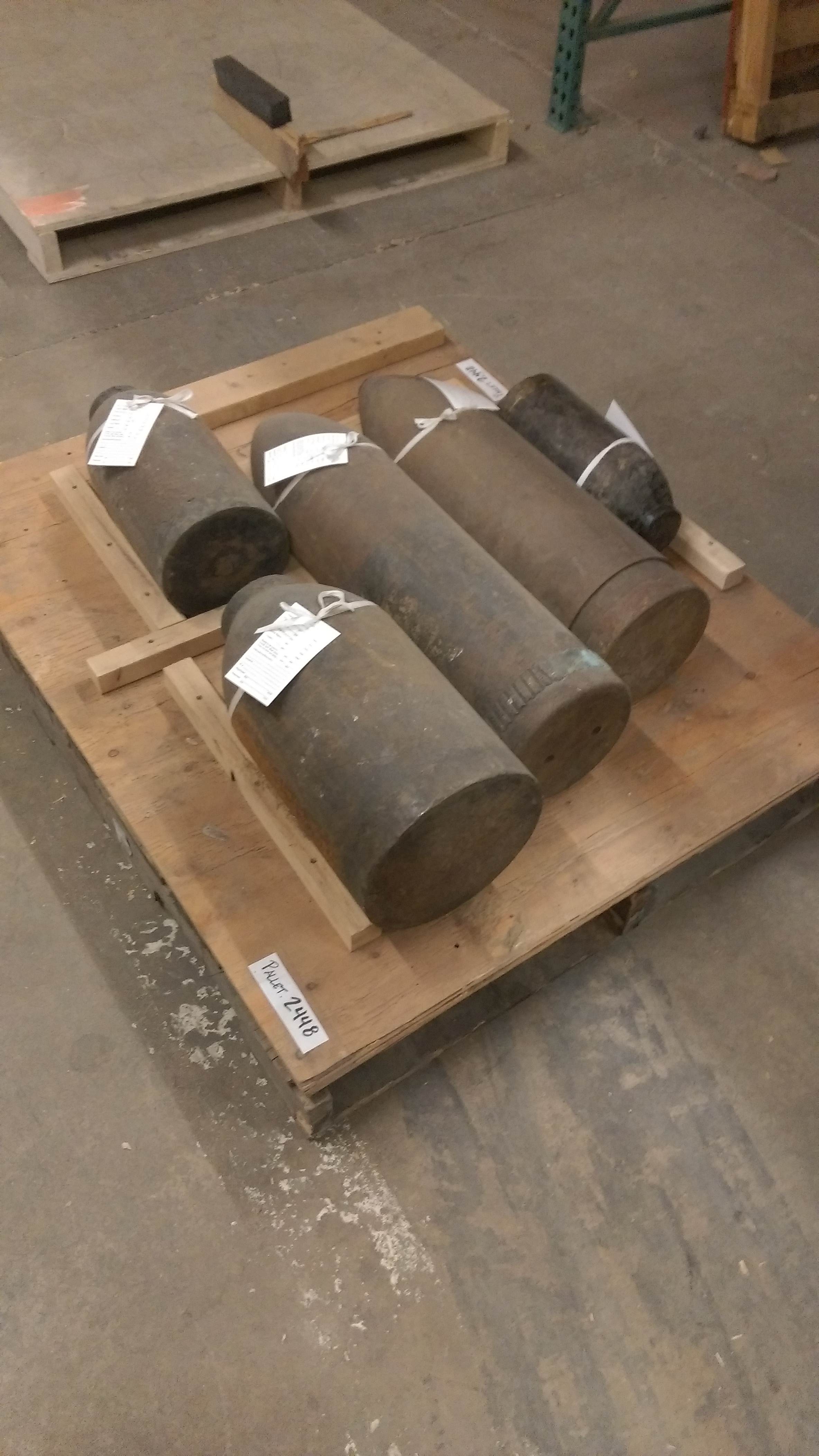Story
An Explosive Start to the New Year
Since September 2016, I’ve been a part of the team working on an Institute of Museum and Library Services grant to move items from our Pueblo warehouse to Denver. Each week we’ve been able to discover so many new objects and properly pack them on pallets and ship them. The first week of the new year started as it always does: we were moving objects off the shelves and onto pallets to start securing them for a safe commute. On January 4, we decided to start working on military shells. In plain sight for the entire project were ten military projectile shells of varying sizes sitting on wooden pallets that we’d held off on packing due to their large sizes and weight.
We carefully moved the shells into the aisle to transfer them to sturdier pallets. As we looked at these incredibly large, historic projectile shells, there was concern about whether they were still active. According to policy, when working with any hazardous material we take precautions to stay safe. None of us being experts on military explosive devices, we took caution and contacted Collections staff in Denver. The police were called for inspection, and, when they arrived, they called the bomb squad. The bomb squad technician was unable to determine whether the items were still “live,” so he brought in his x-ray equipment. By getting an image of the inside of each projectile, he explained, he’d be able to determine whether it was live or inert.
The x-ray process was a lengthy one. Many of the projectiles were dated to the Civil War or World War I era and were built with such a thick outer shell that it was difficult for modern x-ray technology to penetrate. After a few hours of x-raying, it was determined that six out of the ten projectiles were deemed unsafe because the x-rays could not accurately determine whether they were live or inert. Since they were military in nature, soldiers from Fort Carson Military Base in Colorado Springs were called to remove the bomb threats and destroy them on base. Six Fort Carson soldiers safely transferred the potentially live projectiles to pallets and loaded them into their military vehicles. Safety was taken very seriously, and we were told that the items would be destroyed immediately.
As an emerging museum professional, this experience has prepared me and the rest of the crew with experience in dealing with hazardous collections. When working with historical collections, museums can encounter these situations frequently with anything from loaded firearms to controlled substances in medical collections. Safe handling, complete documentation and proper procedure and safety measurements are always important in making sure the rest of the collection, staff and surrounding neighborhoods stay safe!



